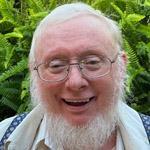
I am always interested in the use of mathematics in society. Though I am not a mathematician, I have a close relative who uses mathematics to model real world situations, and he makes it seem fascinating. This article outlines how ‘mathematical modelling’ is helping with the research into disease-prevention.
A short history of 'epidemiology'
The modern science of epidemiology is defined as "the science of the study of the patterns, causes, and effects of health and disease conditions in defined populations." It uses a range of sophisticated statistical techniques that have been tried and tested over the past 200 years to identify whether there is a connection between a disease (most famously lung cancer) and a possible cause (in this case, smoking).
These mathematical methods can never prove what is 'cause' and what is 'effect', but they can be used in conjunction with other biologically valid processes to show the probability of one thing being related to the other—for instance it might be a 90% probability, or some other calculated number—science is never 100% certain of anything.
One of the earliest documented protagonists of this methodology was Dr John Snow. When there was a cholera outbreak in Soho, London, in 1854, he talked to residents of the area about which communal pump they used for their water supply. From this, he drew a map of where there was disease, and from this he traced its source to the Broad Street pump. At that time, no-one knew that micro-organisms caused disease – at first he was purely looking at the mathematics of the distribution of the disease, and wondering if it was due to the water.
But this was not enough for him; with a very modern spirit of enquiry, he also did some microscopic and chemical investigations of various samples from different sources of water in London. Even though this showed that the downstream inlets from the River Thames were dirtier than the upstream inlets to the water supplies, the science was not sufficiently advanced for him to convince the water company that there was a problem, and in the end it was the mathematical epidemiological evidence that convinced them to remove the handle from the Broad Street pump. History tells us that the cholera epidemic then stopped.
It was later found that the well supplying this pump was adjacent to an old cesspit, which was contaminated with cholera from the washing water of babies' nappies.
Snow also used mathematical calculations in his practice as a physician—he accurately calculated the doses of ether and chloroform needed for safe and effective anaesthesia for individual patients. He is reported to have used chloroform for Queen Victoria during the birth of some of her children. Some people are ahead of their time, and Dr Snow was demonstrably one of them.

New insights into the spread of viruses
Even though the maths of epidemiology now helps medical personnel and authorities to monitor and predict outbreaks of diseases, some of the underlying biology of micro-organisms is still not understood. Scientists from the USA and Queensland, Australia, have recently studied non-infective virus particles of Dengue Fever that co-exist with the active form. By studying a combination of genetics of the two types of the one virus (defective and normal), and designing a mathematical model of how its various genes spread through a population of infected people, they showed that the presence of the non-infective form made the active form more virulent, helping it to invade the cells of the host (humans) and multiply.
This may have implications for other virus infections, such as 'flu epidemics. Similar techniques used in future may be able to shed light on how some viruses cross from animals to humans and become pandemics.
Computer-aided 3D image of a virus
One of the powerful tools biologists now have is computer graphics. Right from the work of the Braggs (father and son) from South Australia in the 1900s, crystallographers have been able to use X-rays to determine the structure of molecules. However, the calculations are complex, so the development of computer programs using these same data, and later computer-aided diagrams and graphics to recreate where each atom lies within the molecule, has enabled us to visualise what tiny viruses might look like.
Australian scientists have gone one step further using a new supercomputer and the radiation from Melbourne's synchrotron to show the predicted movement of a rhinovirus that causes the common-cold virus. This will greatly improve the understanding of how viruses react within our bodies and infect our cells.
Understanding the spread of plant diseases
Human diseases are important to control; but if crops are devastated by plant diseases, there could be mass starvations that could also be devastating to humans.
In Kenya, maize (corn) is one of the most important crops, and most of the nation is fed from the produce of small to medium-sized farms which can be totally devastated if the crop fails. However, there is a disease called maize lethal necrosis, caused by a virus, which ruins the maize and is rampant through the country. An international team of researchers trained in both mathematics and biology has come up with a model to help farmers to control this disease.
They have found that farmers have to co-operate with each other to integrate their rotation of crops and removal of diseased plants over a wider area than just their own farm, in order to help control this disease, otherwise they are banging their heads against brick walls (so to speak).
This approach will be able to help farmers make sensible decisions about other diseases, or problems with other crops, in the future.
In conclusion, although these things seem remarkable to me, as a non-mathematician, I am always pleased when I see that others can use their talents to help humanity.
"Through faith we understand that the worlds were framed by the word of God, so that things which are seen were not made of things that do appear." (Hebrews chapter 11, verse 3)
Revised. First published May 30, 2013

Dr Mark Tronson is a Baptist minister (retired) who served as the Australian cricket team chaplain for 17 years (2000 ret) and established Life After Cricket in 2001. He was recognised by the Olympic Ministry Medal in 2009 presented by Carl Lewis Olympian of the Century. He mentors young writers and has written 24 books, and enjoys writing. He is married to Delma, with four adult children and grand-children.
Mark Tronson's archive of articles can be viewed at http://www.pressserviceinternational.org/mark-tronson.html

Dr Mark Tronson - a 4 min video
Chairman – Well-Being Australia
Baptist Minister 45 years
- 1984 - Australian cricket team chaplain 17 years (Ret)
- 2001 - Life After Cricket (18 years Ret)
- 2009 - Olympic Ministry Medal – presented by Carl Lewis
- 2019 - The Gutenberg - (ARPA Christian Media premier award)
Gutenberg video - 2min 14sec
Married to Delma for 45 years with 4 children and 6 grand children